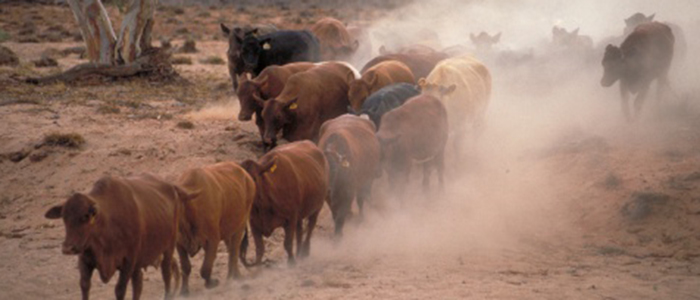Wave Hill

History
Wave Hill (also known as Kalkarindji) and the nearby settlement of Daguragu are the population centres of the land formerly held under the Wave Hill Cattle Station. Wave Hill was formed as a settlement supply town to service the local pastoral industry which grew up in the early 1900's in the area. As stations became larger there was less need for the services the settlement provided.
Wave Hill Station started in 1883, but is most famous for being home of the 'Wave Hill Walk-off' in 1966, where a group of Aboriginal stockmen walked off to earn better wages and conditions. This story has been recorded by singer Paul Kelly in the song, "From Little Things, Big Things Grow".
Wave Hill is now famous for its prehnite, with vast quantities of the nodules scattered over the surface of the ground. Prehnite was first discovered at Wave Hill many years ago and during the 1960's low to medium grade material was mined and sent to Germany for carving. Once polished, prehnite reveals its true beauty and clarity.
Little more happened in the area until a deposit of high gem grade prehnite was discovered in 1982. This deposit is now covered by a granted mineral lease and access to this area requires consent from the title holder.
Discoveries
Prehnite, agate, smoky quartz, amethyst, calcite, jasper
Extensive areas of this region are underlain by volcanic rocks (basalt). These basalts contain geodes which weather out of the lava to form hollow lava-encrusted boulders with their inner surfaces encrusted with crystals. The geodes can be found scattered on the ground and in the soil.
Where the basalt shell has been removed, concentrically-banded red and white agate or quartz crystal remains. Another mineral, prehnite, is also found in geodes or as nodules on the surface. The prehnite occurs as yellow to green radiating crystalline aggregates about 10 cm thick. Opaque and the more highly-prized translucent varieties can be found.
Access
The fossicking area is located south of the intersection of Buchanan Highway and Lajamanu Road, which is 8 km from Kalkarindji. From the intersection, travel along the Lajamanu Road for 4.1 km to a track on the right. Following this track in a south-westerly direction you will arrive at the boundary of the declared fossicking area, although this boundary is not signposted. Refer to the site map PDF (379.1 KB) for co-ordinates. You will also note on this site map the location of the granted mineral lease. You are permitted to enter this area using the track; however you are not permitted to venture off the track within the mineral lease area, unless you have consent from the owner.
Further south on the same track, from the grid next to No. 6 Bore, follow the track south for 5.5 km through a wire gate, and then another 13.5 km to a double steel gate. Go through the gate and 2.3 km further on there is a fork in the track. The track on the right leads to a creek crossing (0.9 km), where some specimens may be found on the southern side of the creek, and to the right of the track.
Please remember that the fossicking area lies within Wave Hill Station and care should be taken not to interfere with the movement of cattle or other station activities.
Mineral Lease 25205: ML 25205 lies within fossicking area 8 and written consent is required to fossick on this title. Consent can be sought by emailing a Fossicking Notice/Request form to Linna Huang, mineral title owner, sales@gemstonesofaustralia.com.au (phone 0401 284 307).
Camping
Although "bush camping" is allowed, please note that there are no facilities on site. Campers in the fossicking area must provide their own water as the water in the area is suitable only for cattle.
All visitors must take their rubbish with them when they leave.
Travelling in the NT
Driving in the Northern Territory can pose unique challenges even to the experienced traveller, and road conditions can change rapidly. Check road conditions, rest stops and National Park closures prior to setting out.

